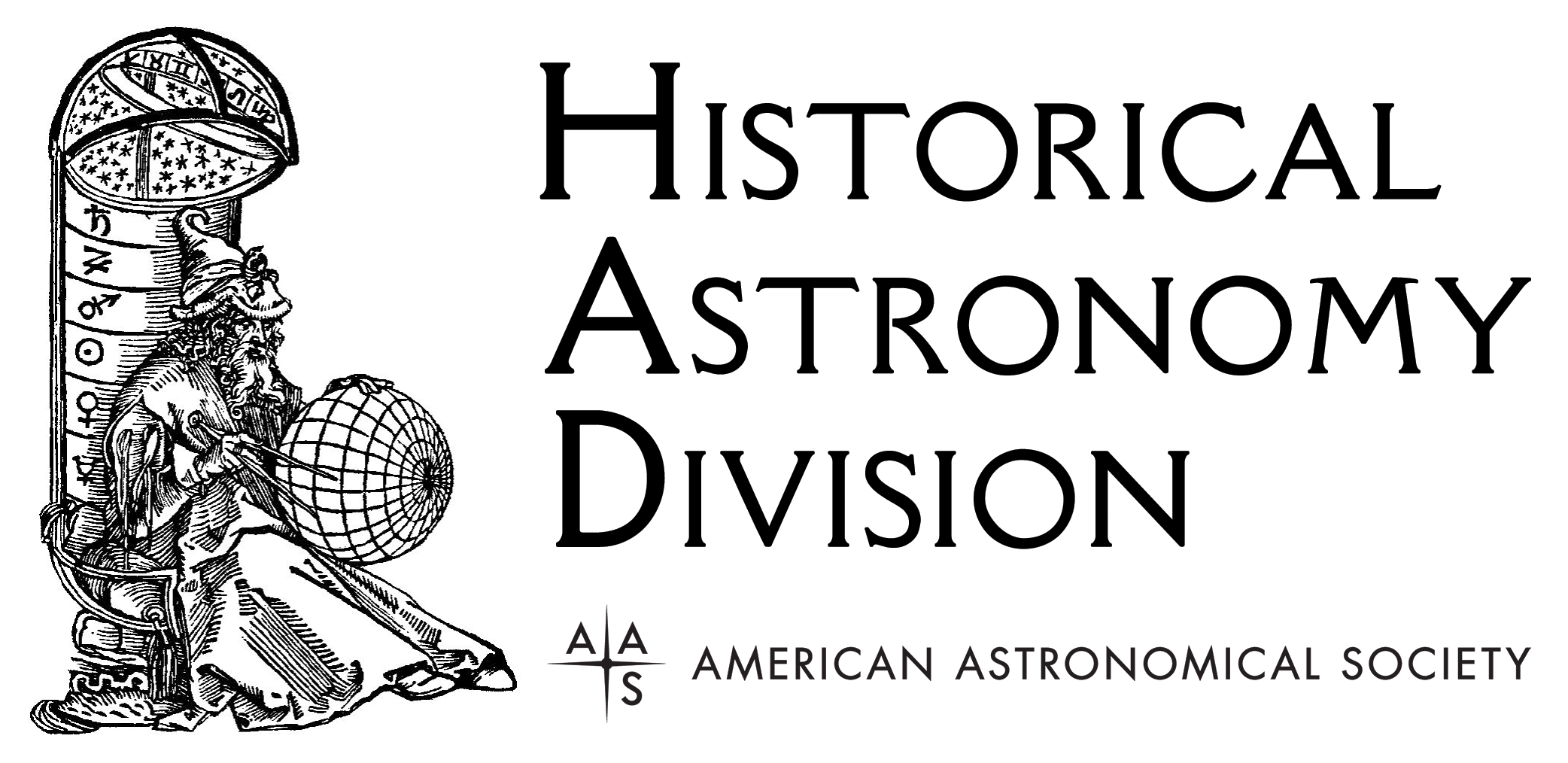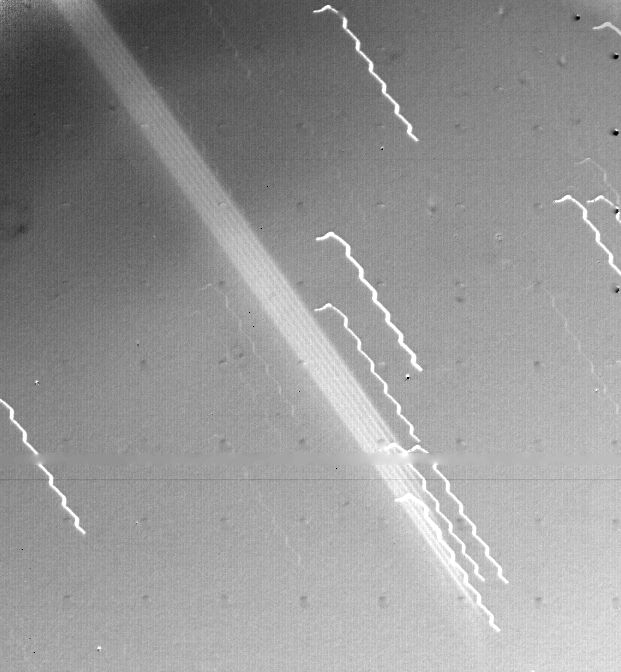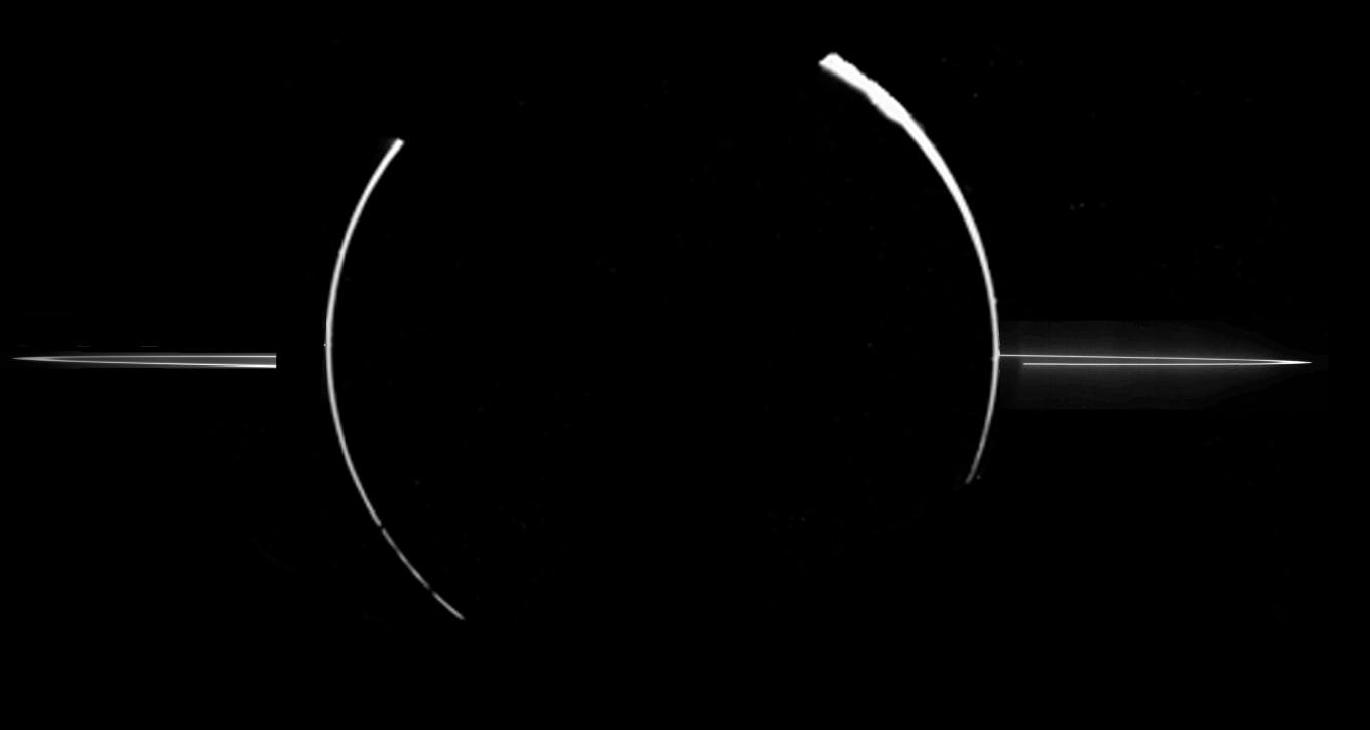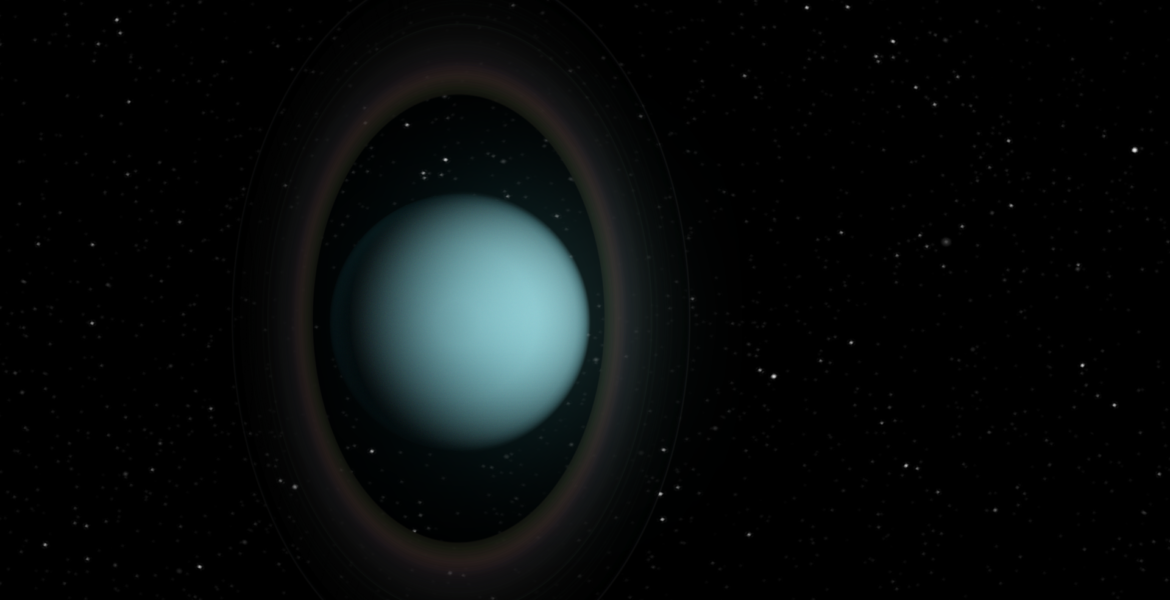This Month in Astronomical History: March 2022
Michael E. Marotta
Astronomical League and Astronomers Without Borders
 Each month as part of this series from the AAS Historical Astronomy Division (HAD), an important discovery or memorable event in the history of astronomy will be highlighted. This month, author Michael E. Marotta writes about the discovery of rings around Uranus and Jupiter. Interested in writing a short (500-word) column? Instructions along with previous history columns are available on the HAD web page.
Each month as part of this series from the AAS Historical Astronomy Division (HAD), an important discovery or memorable event in the history of astronomy will be highlighted. This month, author Michael E. Marotta writes about the discovery of rings around Uranus and Jupiter. Interested in writing a short (500-word) column? Instructions along with previous history columns are available on the HAD web page.
Planets Have Rings
For over 350 years, the rings of Saturn were considered unique. Then on 10 March 1977, with instruments on the Kuiper Airborne Observatory, NASA JPL scientists James Elliot, Ted Dunham, and Jessica Mink discovered faint, dark rings around Uranus.1,2 Two years later, on 4 March 1979, the Voyager 1 probe captured the first image of Jupiter’s ring system.3 Since then, rings have been discovered around Neptune, the centaurs 10199 Chariklo and 2060 Chiron and the trans-Neptunian dwarf planet Haumea, a resonant member of the Kuiper belt.4 Because ring formations are common to both major and minor planets, the salient question could be why Mercury, Venus, Earth, the Moon, and Mars have no rings.
Senior researcher James Ludlow Elliot (17 June 1943 – 3 March 2011) earned both an SB and an MA (simultaneously) from MIT in 1965 and completed a PhD at Harvard in 1972. He taught briefly at Cornell before returning to his alma mater’s George R. Wallace Astrophysical Laboratory for a professorship in Earth, Atmospheric, and Planetary Sciences. Elliot was credited with discovering seven minor planets, among them (95625) 2002 GX32, a trans-Neptunian object.5
Edward Willson "Ted" Dunham earned his BA in 1974 from Carleton College22 and completed his master of science (1977) and doctor of astronomy (1978) under Carl Sagan at Cornell. It was there that he met James Elliott.6 Along with Elliot (and others) he worked at MIT’s Department of Earth and Planetary Sciences from early 1979 and then took a position at NASA Ames.22 He soon was picked up by Lowell Observatory where he has enjoyed a long professional association as their instrumentation specialist for planetary research, including exoplanets,22 as well as serving as a guest speaker at public outreach events.6,7,8
Jessica D. Mink completed her bachelor of science and master of arts degrees in planetary science at MIT (1973, 1974) and then turned to software development, initially creating systems for financial sectors. She then transferred those skills to astronomy, joining the Cornell team that planned to observe the occultation of star SAO 158687 by the planet Uranus in order to discern new facts about the atmosphere of the planet.9 The discovery of the ring was serendipitous.
Verification came quickly as Robert L. Millis, Peter V. Birch and Dan Trout at the Perth Observatory independently reached the same conclusion: the occultations were caused by a belt approximately 24,000 km above the surface or 40,000 km from the center.2 Millis, later the director of the Lowell Observatory, led the team on the ground. Elliot was team leader in the air. 21,22
As Millis remembers it: “When Jim and I met up at the airport after the occultation occurred the first words out of his mouth were ‘How many moons did you see?’ Only some weeks later back at Ithaca when he was showing his wife the strip chart, he noticed that if you folded the strip chart back on itself that you saw that this was symmetrical and you had a series of rings."22
Subsequent investigations revealed a complex set of two ring systems, an inner of nine and an outer of two. The inner nine are each narrow and visibly dark gray. Of the outer two, the inner is reddish suggesting dust10, while the outer appears blue which may indicate water, as does Saturn’s E ring.11
The rings of Jupiter were another surprise. Voyager 1 and Voyager 2 were planned and designed in the 1970s to take advantage of a rare (in human terms: 175 years) relative location of the four outer planets so that they could be studied with the barest allowances for fuel while carrying maximum payloads. Launched later (5 September 1977), Voyager 1 encountered Jupiter first. Launched first (20 August 1977), Voyager 2 arrived second.12
As it approached the giant gas planet, Voyager 1 discovered three moons and within the orbit of the lowest, close to the tops of the clouds, a thin ring was found.13 Ultimately, the Galileo mission (1998) revealed the nature of this ring and its two companions.
"Jupiter's intricate, swirling ring system is formed by dust kicked up as interplanetary meteoroids smash into the giant planet's four, small inner moons… Images sent by Galileo also reveal that the outermost ring is actually two rings, one embedded within the other. … Furthermore, similar faint rings probably are associated with many small moons of the solar system's other giant planets."14
Outward from the planet, Jupiter's ring system begins with (1) a lenticular halo not found in other planetary rings and likely the result of electromagnetic forces, followed by (2) the main ring, itself only 6500 km wide and 30 km thick and brushed by the innermost moon, Adrastea, and (3) exterior to that the so-called "gossamer ring." Exemplifying the complexity of this system, the Jovian moon Metis interacts with the main ring.15
Based on these findings and the resulting analysis it is now accepted that thick planetary rings form by disruptive gravitational attraction within the Roche limit. That could be the debris from the protoplanetary disk or from an impact between two ponderable bodies or from the destruction of a moon that transgressed the planet's Roche limit. Therefore, it had been theorized that thick rings were inherently unstable and must have dissipated. However, other research now suggests that Saturn's rings date to the early Solar System.16 On the other hand, the tenuous rings of Jupiter and Uranus are the result of meteoroid impacts with orbiting moons.17 Less widely subscribed to and yet impossible to falsify it seems that the blue ring of Uranus and Saturn’s E ring are cryovolcanic ejecta.17,18

Fig. 1: Kuiper Airborne Observatory — Left: The Kuiper Airborne Observatory flies with its telescope door open in 1980. The converted C-141 aircraft had a 36-inch telescope just in front of the wing. Right: Inside the KAO, where the mission crew sat during flight. These consoles were positioned along the side of the aircraft's cabin. The portion of the telescope system that was inside the cabin can be seen at the back of the image. The open telescope cavity was separate from the pressurized cabin. Credit: NASA

Fig. 2: "First evidence of a ring around the planet Jupiter is seen in this photograph taken by Voyager 1 on 4 March 1979. The multiple exposures of the extremely thin faint ring appear as a broad light band crossing the center of the picture. The edge of the ring is 1,212,000 km from the spacecraft and 57,000 km from the visible cloud deck of Jupiter. The background stars look like broken hairpins because of spacecraft motion during the 11 minutes 12-second exposure. The wavy motion of the star trails is due to the ultra-slow natural oscillation of the spacecraft (with a period of 78 seconds). The black dots are geometric calibration points in the camera. The ring thickness is estimated to be 30 km or less. The photograph was part of a sequence planned to search for such rings in Jupiter's equatorial plane. The ring has been invisible from Earth because of its thinness and its transparency when viewed at any angle except straight on. JPL manages and controls the Voyager Project for NASA's Office of Space Science."
Fig. 3: Visible light image of the rings of Jupiter. Credit: NASA, JPL, Galileo Project, (NOAO), J. Burns (Cornell) et al.

Fig. 4: Artist’s impression of the Uranus rings based on data from Atacama Observatory. Credit: NRAO/AUI/NSF; S. Dagnello.
References
- Barrow, R. 10 March 1977. "Occultations by Uranus and (6) Hebe," http://www.cbat.eps.harvard.edu/iauc/03000/03047.html
- Marsden, Brian C. editor. 14 March 1977. "Occultation of SAO 158687 by Uranus and Satellite Belt," http://www.cbat.eps.harvard.edu/iauc/03000/03048.html
- Marsden, Brian C. editor. 16 March 1979. "Jupiter"
http://www.cbat.eps.harvard.edu/iauc/03300/03338.html#Item1 - Prialnik, Dina K.,Barucci, Antonella, Young, Leslie. 2019. The Transneptunian Solar System.
Amsterdam, San Diego: Elsevier. - Dunham, Ted. 2020. “James L. Elliot (1943-2011),” Bulletin of the AAS, Vol. 52, Issue 2. https://baas.aas.org/pub/2020i0317/release/1, accessed 12 February 2022.
- The Astronomy Genealogy Project at astrogen.aas.org
- The Lowell Observatory https://lowell.edu/
- https://www.researchgate.net/profile/Edward-Dunham
- Mink, Jessica. 2021. “Jessica Mink: Astronomical Software Developer, Data Archivist, and Positional Astronomer,” Telescope Data Center, Smithsonian Astrophysical Observatory, Harvard-Smithsonian Center for Astrophysics, http://tdc-www.harvard.edu/mink/, accessed 14 December 2021.
- https://solarsystem.nasa.gov/planets/uranus/in-depth/
- https://solarsystem.nasa.gov/news/13021/put-a-ring-on-it/
- https://voyager.jpl.nasa.gov/frequently-asked-questions/fact-sheet/
- https://history.nasa.gov/EP-177/ch2-3-1.html accessed 14-December-2021 20:41 hours
- Brand, David. 1998. “Galileo finds Jupiter’s rings formed by dust blasted off small moons,” Cornell Chronicle, 15 September 1998. https://news.cornell.edu/stories/1998/09/jupiters-rings-formed-dust-its…
- https://www.jpl.nasa.gov/images/pia00657-jupiters-main-ring
- https://voyager.jpl.nasa.gov/mission/status/
- Martinez, Carolina; Scott, Jim. 2007. "Saturn's Rings May Be Old Timers" NASA News Release 2007-149. http://www.nasa.gov/mission_pages/cassini/media/cassini20071212.html
- Spahn, Frank; Schmidt, Jürgen; Albers, Nicole; et al. 2006. "Cassini Dust Measurements at Enceladus and Implications for the Origin of the E Ring," Science, Vol. 311 p. 1416-1418.
- Porco, C. C.; Helfenstein, P.; Thomas, P. C.; et al. 2006. "Cassini Observes the Active South Pole of Enceladus" Science vol. 311 p. 1393–1401.
- Personal correspondence with Peter V. Birch 13-14 February 2022.
- Personal correspondence and conversation with Robert L. Millis 14 February 2022.
- Personal correspondence with Edward W. Dunham 12-15 February 2022.

